The Weirdness of Water
For something that is odourless, transparent and tasteless, water is actually quite interesting. Across two shows, Hannah and Adam filter out some of the more surprising properties of the liquid that literally gives us life.
Here are 10 key pointers to whet your appetite and navigate this overflow of information!
-
![]()
The Curious Cases of Rutherford & Fry: The Weirdness of Water Part 1
‘Please explain the weirdness of water?’ asks Neil Morton in Stirling. Rutherford and Fry learn about the special hydrogen bonds that makes water such an unusual liquid.
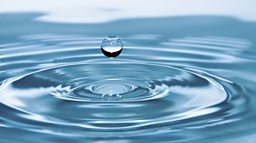
1. What is water?
Comprising an oxygen atom with two hydrogen atoms stuck to it, water, as mentioned, is odourless, transparent and tasteless. It also has a strong surface tension and a high boiling point in comparison to most other liquids. In its solid state (ice), it is actually less dense than in its liquid state, and it’s a good solvent, particularly for minerals – but not for fatty and oily substances (hence why we survive it!). Water is very good at storing energy and has a high heat capacity, which is why it takes a lot of heat to boil it. More curious still, is that water is amphoteric – meaning that it can act as an acid or an alkaline base because a small percentage of its molecules become hydroxide ions or hydrogen ions.
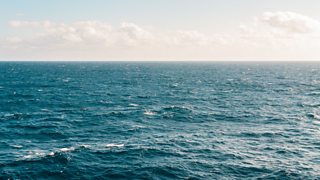
Water is actually at its most dense at four degrees!
Oh, and it also covers 71% of Earth (or “Planet Water”, as Hannah calls it), and there may be more of it in rocks than there is in our oceans!
2. Hydrogen bonds give water its wacky quality
The characteristics of water make it quite an extreme example of a liquid. The way it behaves is down to hydrogen bonds. These are created because the oxygen atom is “greedy” for electrons, as quantum physicist Professor Patricia Hunt describes it. This means that the hydrogen atoms, sticking out at either side, end up positively charged while the oxygen atom is negatively charged. The different poles of the molecules start sticking to their opposites. However, although they form a hexagonal structure, they don’t do that in a fixed way because the bonds are turning on and off all the time.
3. Water expands as it cools
Counter-intuitive but true! Most things contract as well as get colder when you take energy out because there are fewer vibrations. However, when water is cooled the hydrogen bonds become more stable and the now more fixed hexagonal molecule structures layer on top of each other, leaving a lot of space down the middle of the sheets that are forming. This is why ice sits on top of water. Water is actually at its most dense at four degrees!
4. There are 15 types of ice!
Because of the relative roominess of water’s solid state, it means that there is more scope for different types of ice, essentially variations on how impacted the structures are. There are 15 known types altogether, although they don’t have very exciting names, just ice 1, ice 2 etc.
5. Water: drink when you’re thirsty
You’ll often hear advice on how much water you should drink. The history of this advice goes back to 1945 when the US Food and Nutrition Board of the National Research Council told adults that their daily consumption of water should be one millilitre for every calorie eaten. This amounted to 2000 calories/2 litres of water for women and 2500 calories/2.5 litres for men. Nearly 30 years later, in 1974, a book called Nutrition for Good Health recommended that the “average adult” should consume between 6-8 glasses of water a day. In both cases the total could include the water that is present in food and in other drinks, including caffeinated and fizzy drinks.
Hannah Fry suggests a more pragmatic approach: “Drink when you’re thirsty.”
-
![]()
The Curious Cases of Rutherford & Fry: The Weirdness of Water Part 2
Why does boiling water sound different? Why is water essential for life? These are some of the questions Adam and Hannah try to answer.
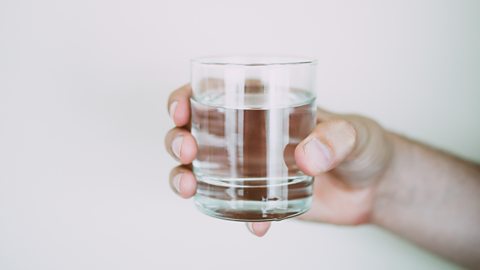
What would happen if you drank pure H2O?
Adam and Hannah discuss how pure water could be not so good for you
6. Pure water would kill you!
The water from a tap or water bought in bottles has lots of impurities in it. It’s a good thing too! The salts and minerals (e.g. magnesium chloride and sodium chloride) present give it a “tonicity” or salt level that make it acceptable for the body’s cells. If there were no salt in the water – a hypotonic state – it would rush into your cells and, as Adam says, “cause them to swell up and explode, causing you to definitely die.”
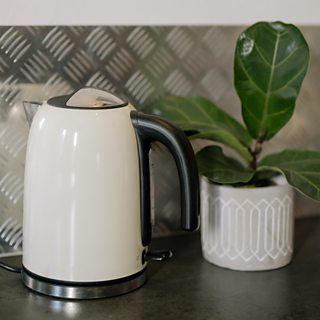
7. Why does boiling water take so long? And why is a microwave so quick?
When you’re adding heat/energy to water what you’re doing initially is breaking the hydrogen bonds, described above, rather than raising the temperature. As soon as that’s done and the molecules are free, the energy you’re putting in raises the temperature and the water can boil. The necessary rise in temperature happens very quickly at this point, after a slow start! Meanwhile, a microwave manipulates the electrostatic molecular structure of water by using high frequency electromagnetic radiation to switch the molecules’ direction between positive and negative, making them spin and creating rotational energy and, therefore, heat.
8. Why water is the lifeblood of the planet
Water’s heat retention property is crucial to the planet, as Philip Ball, science writer and author of H2O – A Biography of Water, explains:
“Warm ocean currents are basically storing loads and loads of heat, so when they come up from the tropics around the equator towards polar regions, they're carrying that heat with them. That's really important for redistributing heat on the surface of the Earth so that you don't get real extremes of temperature, that it's really warm in the tropics and really, really cold in the poles. It might feel that way, but it would be far more extreme if water in the ocean currents wasn't transporting heat up towards the poles.”
9. Eau de vie
Water is essential for life, whether by accident or design.
Take water’s heat capacity – i.e. the point at which it takes the least amount of energy to change temperature. It’s around 36 degrees. That’s body temperature, so it means that most mammals don’t have to use much energy to get back to a normal level.
Meanwhile, water molecules provide proteins with “scaffolding” so they can work effectively inside the body. They also provide proteins with “water wires” that conduct hydrogen ions, crucial to the body’s biochemistry and present in many reactions within it.
10. Water, water, everywhere?
It’s believed that water may have arrived on Earth via ice-covered asteroids. But what about water on other planets? Likely candidates for holding water have been identified by the Kepler space telescope within what’s known as “The Goldilocks Zone”. This is an area where planets are just the right distance from their star to enjoy temperatures that sustain water. Meanwhile, in our own solar system, and outside this zone, Jupiter's moons Callisto and Europa appear to have a liquid water ocean underneath their surface, with a similar likelihood for Saturn’s moon, Enceladus.
�鶹�� Ideas: Why water is one of the weirdest things in the universe
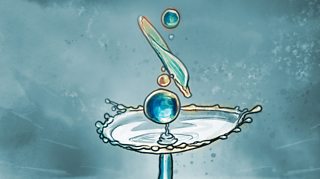
Science journalist Alok Jha on why water is so incredibly strange. Prepare to have your mind blown...
More on water with Radio 4
-
![]()
Just One Thing with Michael Mosley: Drink Water
Michael discovers how a glass of water with every meal could improve your mood, and boost physical and mental performance.
-
![]()
The Life Scientific: Hannah Cloke and predicting floods
Professor Hannah Cloke of the University of Reading talks to Jim Al-Khalili about predicting this summer's serious floods and why lives shouldn't have been lost.
-
![]()
Inside Science: Meeting Mars, Melting Ice, Ozone on the Mend Again, and A Sea Cacophany
Victoria Gill, Dr Anna Hogg and guests discuss the signs and symptoms of melting ice and anthropogenic climate warming, illicit CFC production and the racket we make in the seas.
-
![]()
Will Self Takes the Waters
Will Self ponders the origins of our insatiable thirst for bottled waters, and the spa towns from which they spring. Are they a luxury the world can no longer afford?























